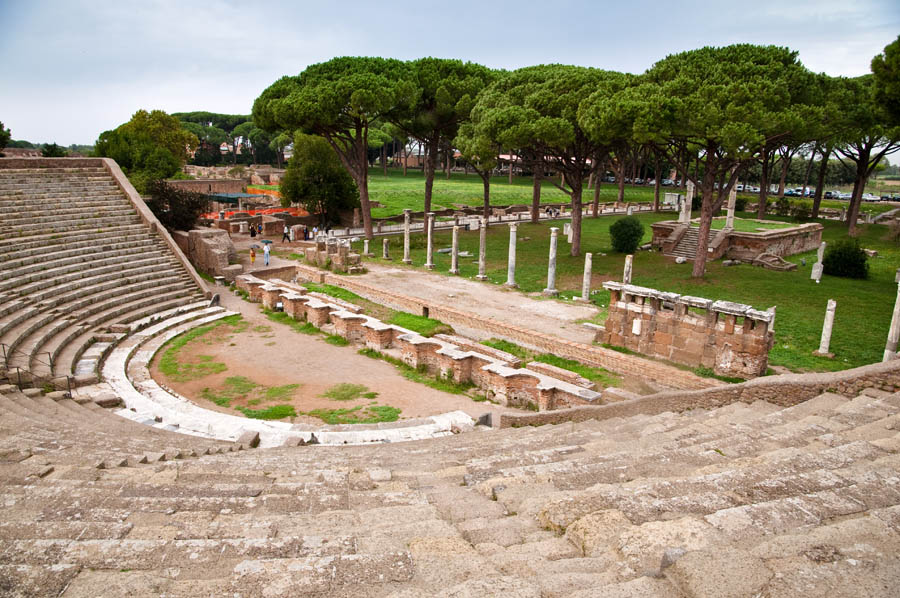Ostia Antica

Departing from Tel Aviv we will arrive at Rome’s international airport. Before we start the visit of Rome, we drive for approximately 10 minutes towards the sea, to visit the site of Ostia Antica the harbor city of Ancient Rome. We explore the well preserved excavations and step back in time into Roman antiquity. Ostia was a cosmopolitan city, which is reflected with the various temples dedicated to Mitra ( Persian) Cibele ( Turkish ), Iside ( Egyptian) and even a synagogue. No better place to understand that Rome was the right place for Christianity to start being a worldwide religion.
House on Aventino Hill
On the way to Rome, we continue with our tour: we will be reminded of the early companions of Paul, travelling to the Church of Santa Prisca dedicated to Santa Prisca on the Aventino Hill. Prisca came from a rich Roman family and Aquila, her husband was probably Greek. Paul spent a couple of years with them in Corinth and this is very often mentioned in his Letters and the Book of Acts.
The Church of Santa Prisca was erected in the end of the 4th century-beginning of the 5th century on the site of the House of Aquila and Prisca, celebrated husband and wife, who hosted Peter in their “ecclesia domestica” where apostle baptized different people. The dedication to Prisca could be attributed to two personalities: the owner of the house and a 13 years old virgin martyr, who was considered a daughter of Aquila and Prisca.
The interior presents a plan with three naves delimited by two rows of seven Ionian columns, which are embodied into seventeenth-century pilasters. To the right is the baptismal tub where, according to tradition, Peter baptized Prisca.
The excavations that began in 1934 have led to the retrieval of a Roman house from the 1st Century AD, probably where Aquila and Priscilla used to live.
Paul wrote in Rom 16:3-5 “Greet Prisca and Aquila, my fellow workers in Christ Jesus, who for my life, laid down their own necks; to whom not only I give thanks, but also all the assemblies of the Gentiles. Greet the assembly that is in their house.” The House on the Aventino Hill where Paul lived is named in a legal document of the 5th century, as “Titulus Priscae.”
Insula Di San Paolo alla Regola
We continue following the steps of St Paul recalling both his first and second visits to the city. We will begin our visit to the Insula Di San Paolo alla Regola. According to tradition, S. Paolo Alla Regola is the most accredited hypothesis of the first home of Paul in Rome. Here he lived between 61 and 63 AD, for eighteen months as required by law, pending trial. In this first Roman period, in his state of semi-freedom, Paul may have met the community of Rome, “domus ecclesiae” where they gathered to share the Word and the Eucharist and may have visited the house of Aquila and Priscilla.
Paul lived in one of the places inhabited by the Jews, near the River Tiber, the Trastevere area, beyond the port of Ripa Grande, the 14th and final quarter of the city, according to the division of Augustus. Recent archaeological excavations in this zone showed the presence of stores of grain (horreum) and a second-century apocryphal ancient states, in fact, that “Paul took a rented horreum – A large barn where you think you could preach, teach, comfort the Christians.” As the majority of the people living there, Paul worked as a leather tanner. This area became known by the name of “Contrada Pauli” ( Paul’s district) In a legal document of the year 1245, we find the words “ In loco qui dicitur Pauli” (In that place called “of Paul”). In 366 AC, Pope Damaso wanted to build a church over the ruins and dedicated it to Paul.
Visiting the church, you will see the oratory which has been created using the room where Paul lived and on the main beam you can read the following: “This is the place where the Apostle Paul lived and taught.”
Biblical References
- Acts 18:1-28 – Paul meets and works with Priscilla & Aquila
- Romans 16:3-5; 1 Cor 16:19 – Paul mentions Priscilla and Aquila with a church in their home.
- Acts 28:11-31 – Paul arriving in Rome






